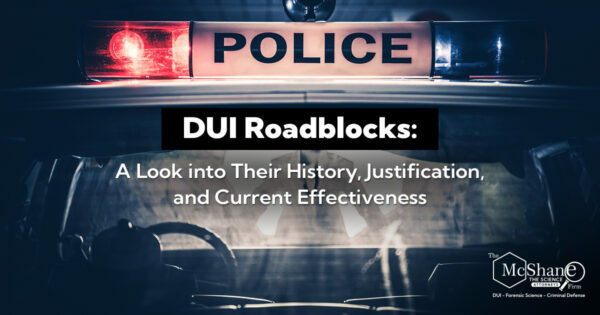Introduction:

DUI roadblocks, or sobriety checkpoints, have been a subject of much debate in the United States. While their proponents argue that they are necessary to ensure public safety, others question their effectiveness and constitutionality. In this blog post, we will delve into the history of DUI roadblocks, the Supreme Court case that approved their use, and the public safety argument justifying these checkpoints. We will also examine the current statistics surrounding DUI prevalence and discuss whether the continued use of DUI roadblocks is justifiable considering the Fourth Amendment.
The History of DUI Roadblocks:
DUI roadblocks have been in use in the United States since the 1980s. Their implementation was initially met with skepticism and legal challenges, as opponents argued that these checkpoints violated the Fourth Amendment, which protects against unreasonable searches and seizures.
The SCOTUS Case that Approved DUI Roadblocks:
The constitutionality of DUI roadblocks was ultimately decided in the 1990 Supreme Court case, Michigan Department of State Police v. Sitz. In this case, the Court ruled in favor of sobriety checkpoints, holding that their use was constitutional.
In the majority opinion, Chief Justice Rehnquist wrote that the primary purpose of DUI roadblocks was to promote public safety by reducing the number of drunk drivers on the road. He argued that the momentary and minor inconvenience of a stop was justified by the greater public good of keeping the roads safe. The Court also noted that the intrusion on individual liberties was minimal, as drivers were briefly stopped and only those exhibiting signs of intoxication were subjected to further investigation.
Public Safety Argument and Statistics at the Time of the SCOTUS Decision:
At the time of the Sitz decision, the Court relied on statistics showing that alcohol-related traffic fatalities accounted for approximately 25,000 deaths annually in the United States. This figure represented nearly half of all traffic fatalities at the time. The Court also cited studies indicating that sobriety checkpoints could reduce alcohol-related fatalities by 1.6% to 20%. Based on these figures, the Court concluded that DUI roadblocks served a significant public safety interest.
Questioning the Continued Justification of DUI Roadblocks:
Since the Sitz decision, the nighttime prevalence of DUI has dropped significantly. According to the National Highway Traffic Safety Administration (NHTSA), the prevalence of drivers with a blood alcohol content (BAC) of 0.08% or higher during nighttime hours has decreased from 36% in 1973 to 8.3% in 2013-2014. That’s nearly a factor of 5. Quite a drop off. Additionally, the number of alcohol-related traffic fatalities has also declined over the years. In 2019, there were 10,142 alcohol-impaired driving fatalities, accounting for 28% of all traffic fatalities in the United States. By adjusting for population growth, we can estimate that the number of alcohol-related traffic fatalities in 2019 would have been approximately 7,042 if the population were the same as in the year cited by the Stitz court when it found that DUI roadblocks served a significant public safety interest. That is nearly a four fold decrease. Quite a decrease.
Despite the decrease in DUI prevalence, the effectiveness of DUI roadblocks in catching impaired drivers remains low. A study published in the American Journal of Preventive Medicine found that only 1 out of every 161 drivers stopped at a sobriety checkpoint was arrested for DUI. Given the low success rate, one might question whether the continued use of DUI roadblocks is still a justifiable intrusion on individual liberties protected by the Fourth Amendment.
Conclusion:
The history of DUI roadblocks in the United States has been marked by a constant debate between public safety and individual rights. While the Supreme Court initially upheld the constitutionality of DUI checkpoints based on public safety concerns and the alarming statistics of alcohol-related traffic fatalities at the time, the landscape has since changed. The significant decrease in DUI prevalence and the relatively low success rate of DUI roadblocks in catching impaired drivers raise important questions about their continued justification. As society evolves, it is essential to reevaluate the balance between public safety and individual liberties, ensuring that the measures we employ to keep our roads safe are both effective and respectful of our constitutional rights.